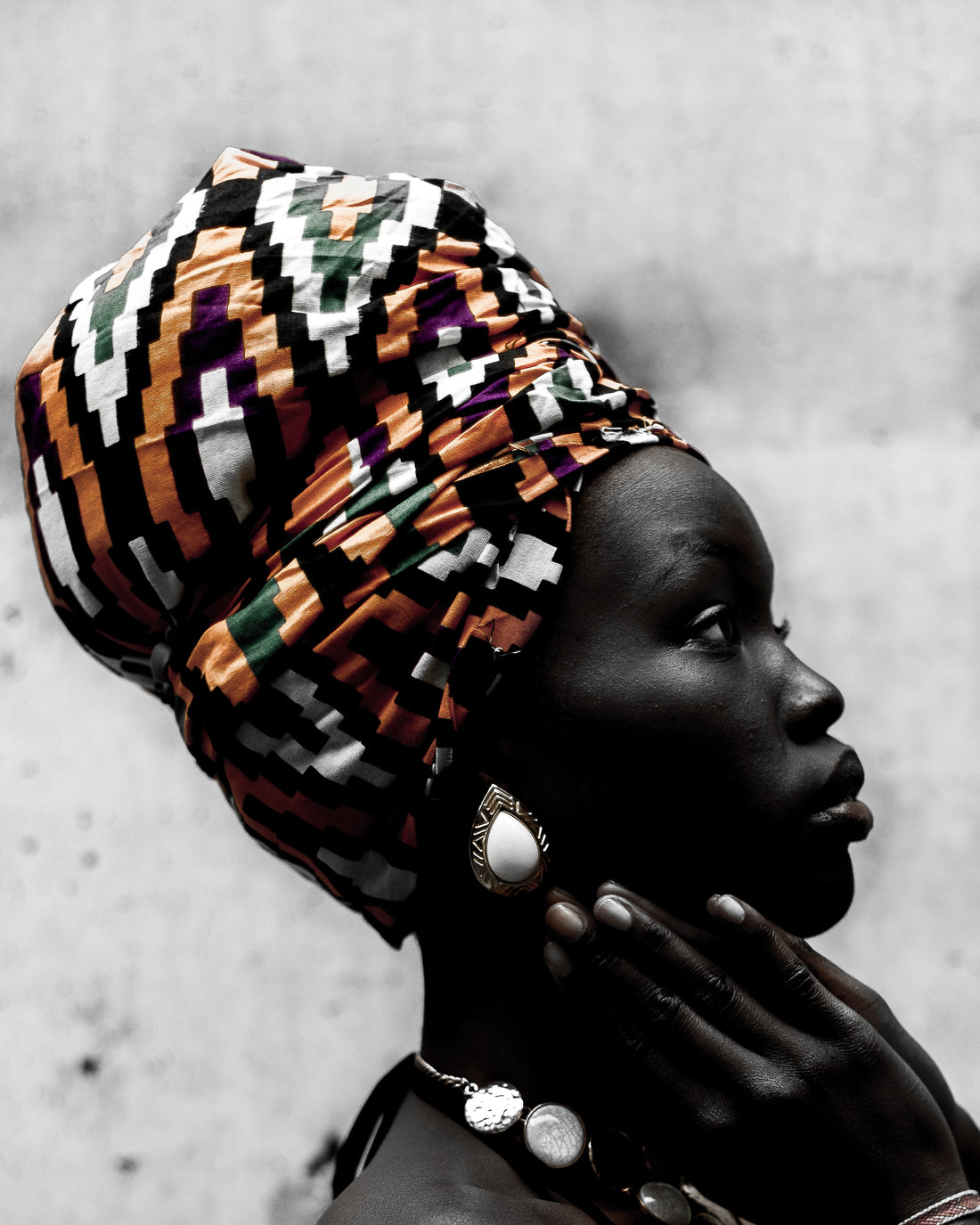Head wraps have gradually started to take over the space in our closets once occupied by wide brim hats. It's hard not to gravitate towards these accessories, especially in the summer when they help to keep our hair and scalp stylishly protected from the sun. Head wraps have really grown in style, variety and popularity. There are scarves of countless colors and prints that can be found in. Their draw seems to come from how they look, especially in the colder months! It is all about expressing yourself to the world with all eyes on you.
A brief history of the African head wrap
The head wrap originated in sub-Saharan Africa, and was often used to convey modesty, spirituality and prosperity. Even men in Africa wear head wraps to symbolize wealth and social status. Head wrapping is literally a way that African’s for centuries have been able to non-verbally communicate their place in life.
The head wrap of a woman walking down the street will tell you if she’s a widow, a grandmother, or if she’s a married young woman. It’s an element in the daily living of an African woman. Head wraps also serve a practical function in protecting the head from the rays of the sun. In West Africa, head wraps are referred to as ‘gele’ in Yoruba or ‘ichafu’ in Ibo.
The African head wrap has become a symbol of exoticism and a cultural fashion statement for decades here in the U.S. Beautiful and versatile, each head wrap gives someone a chance to express their heritage and their love of African fashion. However, there is much more to the head wrap than the beautiful colors and fascinating style; there is a rich cultural history.
The African head wrap is one of the oldest accessories that is still important to the culture of the modern African American woman, but it has had different meanings throughout history.
Headscarves trace their origins back to sub-Saharan Africa and were designed using traditional patterns and colors.
These fashionable scarves held a lot of cultural significance there since they let everybody know about a woman’s marital status, age, or even wealth. They were also used to enhance a woman’s beauty just like today’s accessories.
Unfortunately, as women from Africa arrived in the United States, the headscarf became a sign of enslavement. Fortunately, as African American men and women started to fight for equality and freedom, the traditional scarf reemerged as a symbol of Afrocentric celebration and pride.
Today, that meaning still persists and there are numerous unique head wrap styles available for black women.
Head wraps are accessories with a rich heritage and history and come in a wide variety of colors, patterns, fabrics, and sizes. Today, you will find people wearing them for both special and casual occasions.
While you often see head wraps worn in the African American community, the styles are not limited to those in the African American community.
Different ways to tie the head wrap
Celebrities such as Solange Knowles, Kourtney Kardashian and Eva Mendes are known for sporting beautiful head wraps. It's not easy to recreate their perfect styles, though, so we would be creating easy head wrap tutorials featuring gorgeous line of hand printed goods.
Now, there are plenty of styles and tutorials out there, but below is a compilation of the best of the best that show variety in scarves, styles, creativity, and ease.
The Gigantic Bow

Step 1: Start by gathering your hair into a topknot. Place the head wrap at the back of your head, making sure the fabric is lowered to the nape of your neck. Then, pull ends towards the front.
Step 2: Tie the wrap into a knot at the center.
Step 3: Fold the fabric until it creates an over-sized bow.
Step 4: Hide the ends of the wrap by tucking them into the bow flaps.
The Looped Headband

Step 1: Pull your locks up into a high bun or Afro puff. Fold the head wrap in half and place it at the back of your head before pulling ends towards the front.
Step 2: Tie the wrap into a double-knot at the center.
Step 3: Tuck the ends of the fabric underneath towards the nape of your neck.
Step 4: Slide the fabric back just enough until it has the feel of a headband.
The Spiral Headband

Step 1: Pull your hair into a high ponytail or bun. Fold the head wrap in half so that it's lowered to the nape of your neck.
Step 2: Pull the fabric towards the front and off-center, then tie into a knot.
Step 3: Combine the two separate ends by twisting into one large spiral rope.
Step 4: Tuck the spiral on one side at the nape.
The Sophisticated Knot

Step 1: Style hair into cornrows or another slicked-back style. Fold the head wrap in half so that it's lowered to the nape of your neck and covering your ears.
Step 2: Pull the fabric towards the front and tie into a double-knot.
Step 3: Tuck the ends of the fabric into wrap so your hair is completely covered.
Step 4: Lower the head wrap so that it sits comfortably.

